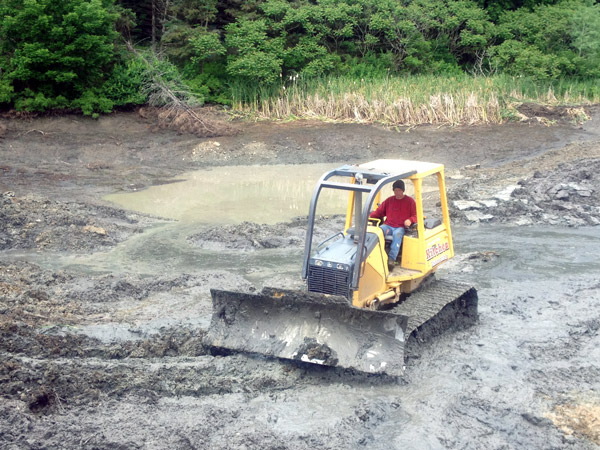Pond Construction
Give us a call!

Making Ponds for You or Your Livestock
As in real estate, there are three secrets to success with ponds location, location, location! Water runs downhill, and a pond simply collects and stores water. It is the most basic form of a reservoir. Locate your pond where the largest storage volume can be obtained with the least amount of earth moving. On flat terrain, where the water table is close to the surface, or where a nearby stream or well can be directed to fill it, a dugout pond works best. Deeply excavated ponds with a smaller surface area are recommended in arid areas where evaporation losses are high and rain is scarce. Often the answer is a combination of methods, a dug-and-dammed pond. The placement of your pond will depend on the reason you are looking to build one as well as the overall space restrictions you are faced with.
Where Should You Build Your Pond?
If you’re building the pond as a livestock water source, it makes the most sense to locate it near the livestock. This means pastures or grazing areas are probably your best bet. For irrigation or fire protection, it’s best to get the water closest to the use source. In other words, don’t move the water further than you have to. For landscape ponds, you’ll want to select an area that is both accessible, and fits well with your landscape. There may already be a natural slope where less excavation could save you time and money. General guidelines to follow are to avoid areas with possible contaminants, like old dump sites, farm drainage, sewage, or swamps. Make sure you also have room for water overflow; you don’t want to damage any other property in a big storm!


